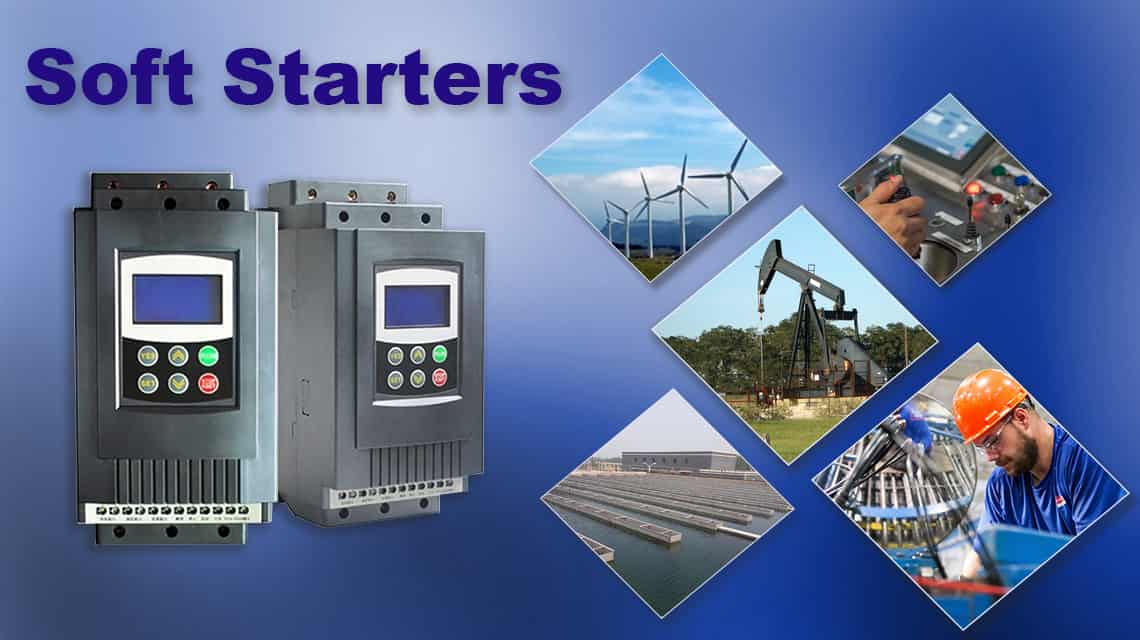
In today’s fast-paced industrial landscape, efficiency is the name of the game. Amidst the hum of machines and the orchestrated dance of production lines, soft starters quietly ensure that heavy-duty motors and equipment kick into gear smoothly, minimizing wear and tear while maximizing efficiency.
These unassuming devices might not grab the spotlight, but they play a crucial role in enhancing efficiency.
What Are Soft Starters?
At their core, soft starters are electronic devices that provide a gentle ignition to electric motors, preventing sudden power surges and jolts during startup. Unlike traditional direct-on-line (DOL) methods that lead to rapid acceleration and abrupt energy spikes, soft starters facilitate a gradual increase in voltage, gradually ramping up the motor’s speed.
This gradual acceleration not only prolongs the lifespan of motors and attached machinery but also conserves energy by reducing initial power consumption. By curbing abrupt voltage spikes, they contribute to grid stability and reduce the risk of costly shutdowns. This often goes unnoticed by consumers, but it is a fundamental cog in the wheel that keeps the lights on.
The key components that enable this controlled voltage ramp-up are thyristors, electronic switches capable of regulating current flow. A soft starter typically contains three thyristors connected in an arrangement known as a “phase-angle control circuit.” This circuit enables the adjustment of the voltage supplied to the motor by controlling the angle at which the thyristors conduct electricity.
The process of motor initiation through a soft starter occurs in distinct phases:
- Initial Voltage Boost: When the motor start command is issued, the soft starter supplies a low voltage to the motor, initiating its rotation. This initial boost avoids sudden jerks or mechanical stress.
- Incremental Voltage Increase: As the motor gains momentum, the soft starter gradually increases the voltage supplied to the motor. This step-by-step approach ensures a smooth acceleration, preventing current spikes.
- Full Voltage: Once the motor reaches a specified speed, the soft starter allows the thyristors to fully conduct, providing the motor with the required operational voltage. By this point, the motor is already in motion, and the transition to full voltage is seamless.
Reactive Control and Motor Protection
Soft starters are not only about controlled start-ups; they also incorporate features to safeguard both the motor and the connected machinery:
- Current Limiting: Soft starters monitor the current drawn by the motor. If an abnormal current surge is detected, the device intervenes by reducing the voltage supplied, preventing motor overloads.
- Motor Braking: In cases where motors need to come to a halt quickly, soft starters can be programmed to provide controlled deceleration, protecting the motor from sudden stops that could cause mechanical stress.
- Voltage Drop Compensation: Soft starters compensate for variations in the supply voltage, ensuring that the motor receives consistent voltage levels even if the power supply is unstable.
Why Soft Starters Matter: Efficiency and Protection
- Reduced Mechanical Stress: Traditional startup methods can subject motors to excessive mechanical stress due to sudden jolts. Soft starters alleviate this stress by ensuring a controlled and smooth acceleration, leading to longer equipment lifespans.
- Energy Conservation: The initial power surge during motor startup can strain the electrical grid and lead to higher energy bills. Soft starters mitigate this issue by limiting current spikes, resulting in energy savings and a more stable power supply.
- Enhanced Process Control: In applications requiring precise control over motor speed, soft starters offer superior adjustability compared to conventional methods. This feature is particularly valuable in industries like conveyor systems and manufacturing lines.
Applications Across Industries
Soft starters find their place in an array of industries, contributing to smoother operations and increased efficiency:
- Manufacturing: From conveyor belts to packaging machines, soft starters ensure seamless motion control and minimize wear and tear during production processes.
- Water Treatment: In water treatment facilities, soft starters play a vital role in controlling pumps, reducing water hammer effects, and maintaining a steady flow of liquids.
- Mining: The demanding conditions of mining operations necessitate robust equipment. Soft starters ensure gentle acceleration of motors in crushers, conveyors, and pumps, reducing downtime and maintenance costs.
- Energy Sector: In power generation, soft starters ease the startup of large turbines and generators, preserving equipment integrity and preventing grid disturbances.
Unveiling the Unseen: Lesser-Known Aspects of Soft Starters
- Adaptive Control: Some advanced soft starters feature adaptive control algorithms that monitor motor behavior and adjust startup parameters in real-time, optimizing performance based on load conditions.
- Built-In Protection: Soft starters often include protective features like overload detection, phase loss protection, and short-circuit prevention, adding an extra layer of security for both equipment and operators.
- Harmonics Mitigation: Soft starters can help mitigate harmonics in electrical systems, enhancing power quality and reducing the risk of disturbances to sensitive equipment.
Engineers and innovators are continuously pushing the boundaries of this technology, seeking ways to enhance its performance and applicability. From incorporating advanced control algorithms to exploring seamless integration with the Internet of Things (IoT), the future promises exciting developments that could redefine the way industries operate.
As industries continue to prioritize efficiency and sustainability, soft starters emerge as key players in achieving these goals.



